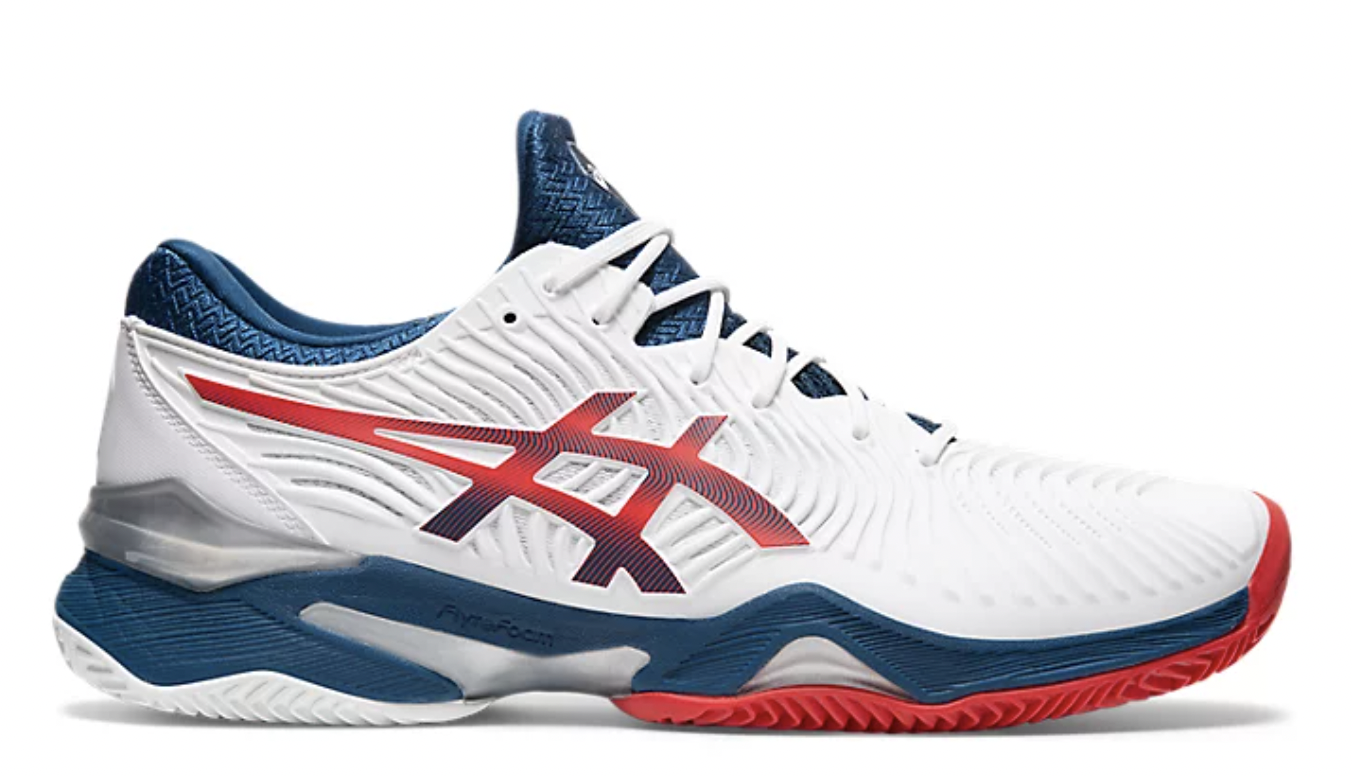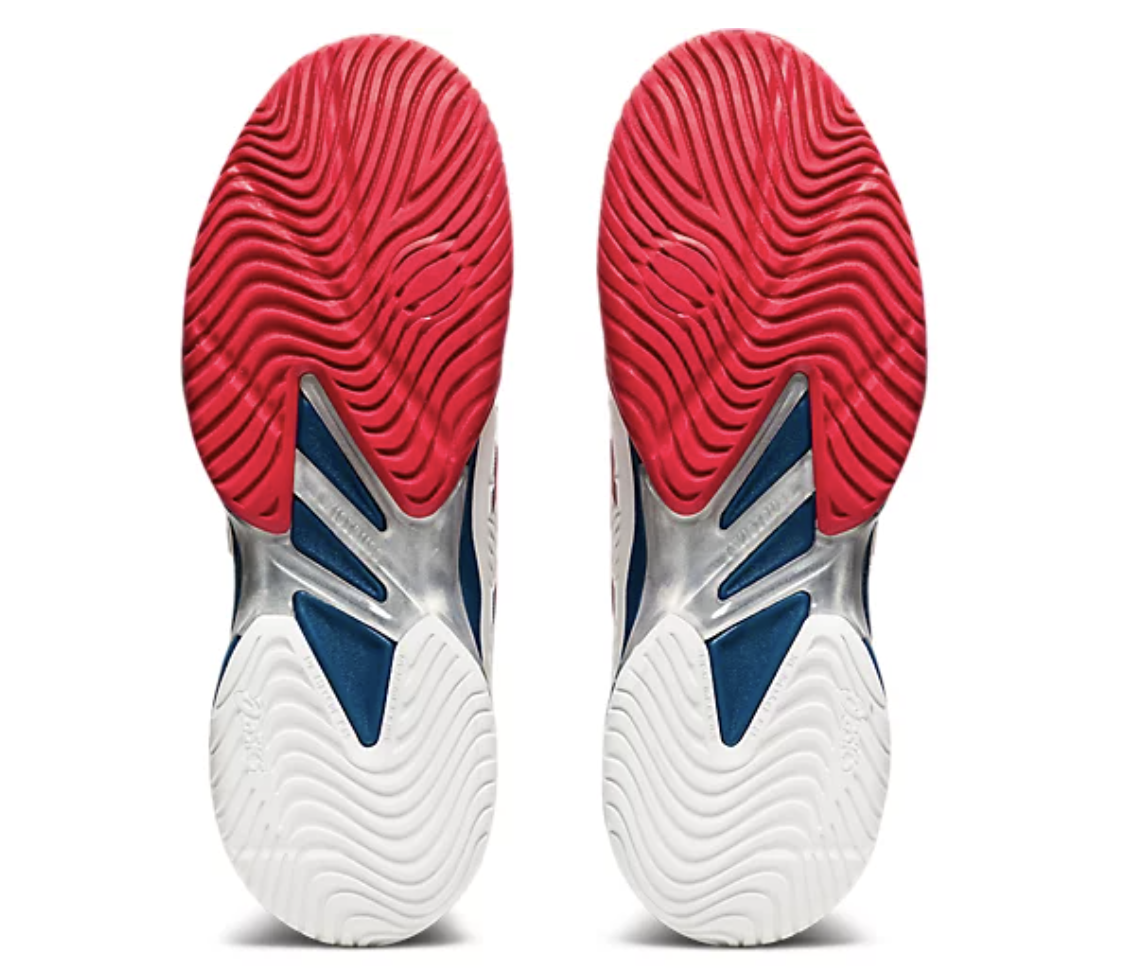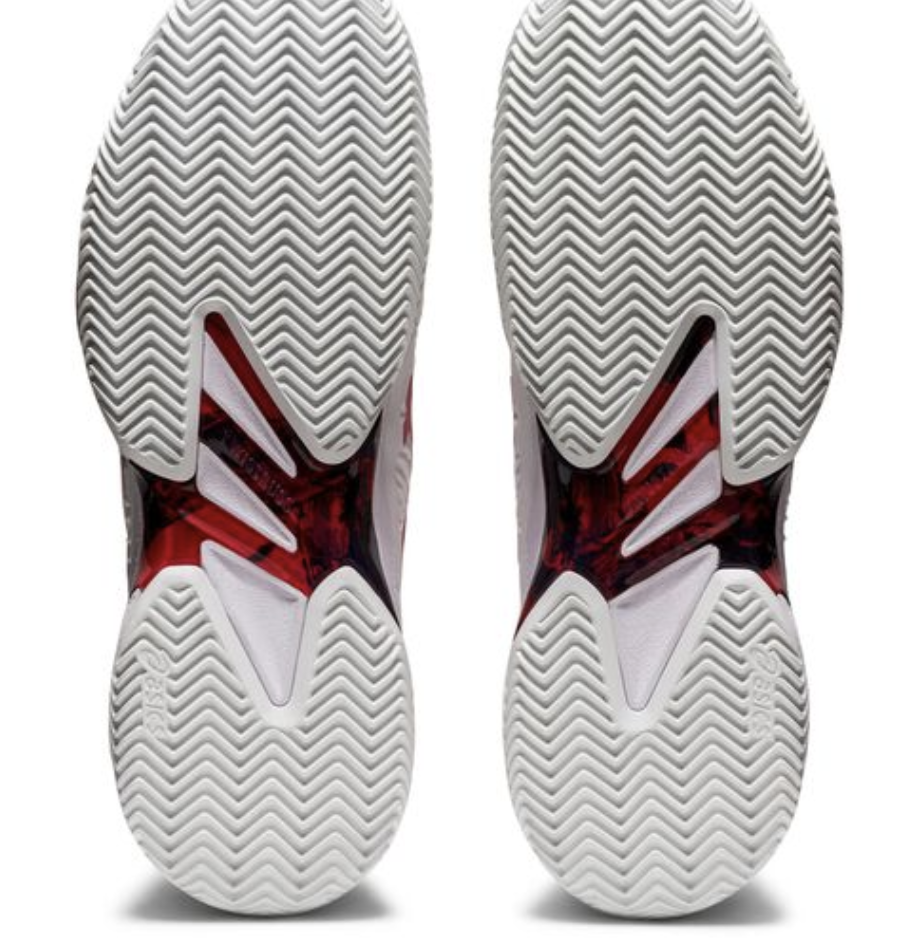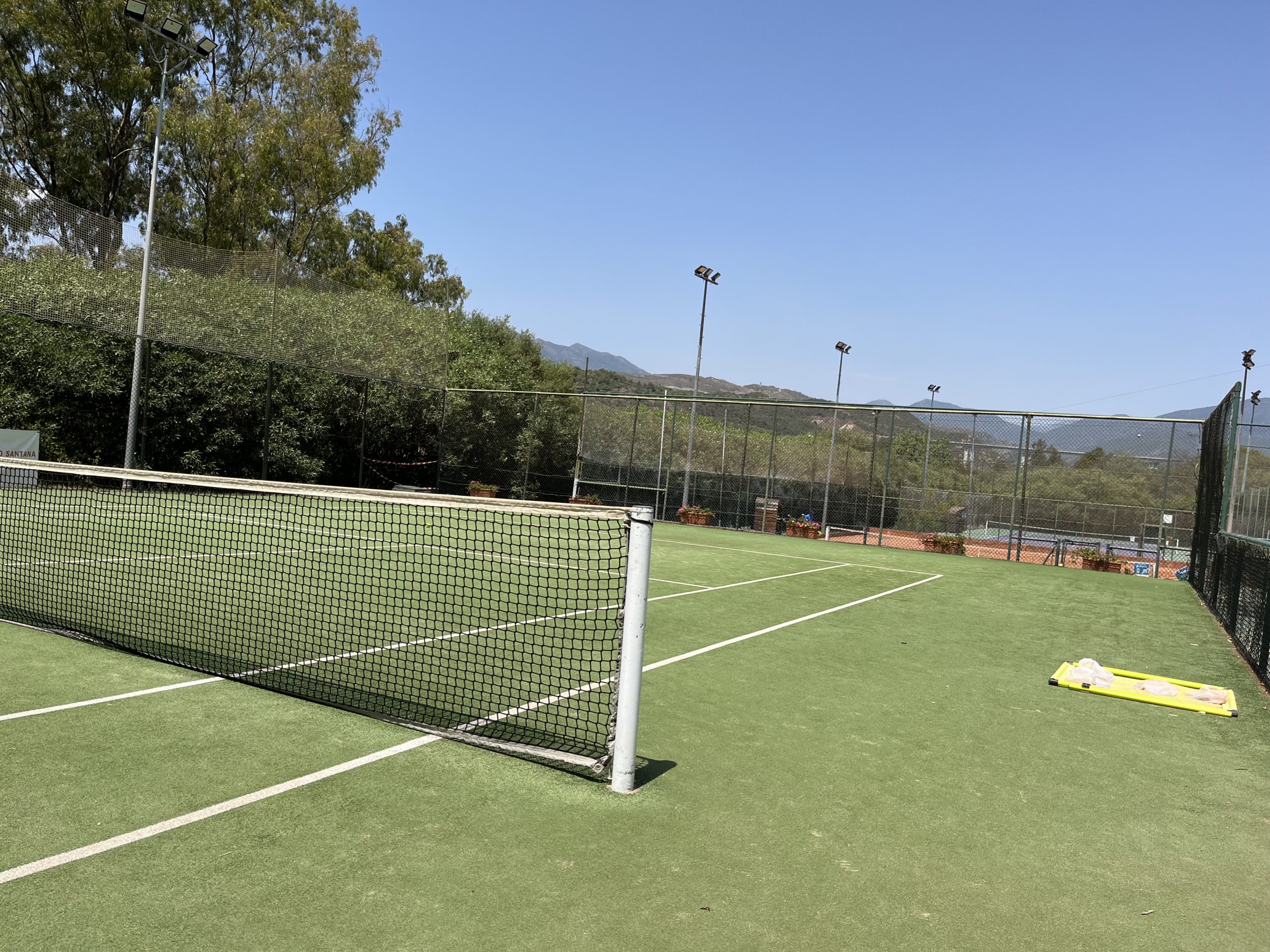Choosing the right tennis shoe for different surfaces

Asics tennis shoe
Tennis shoes like all sports gear, come in all kinds shapes and sizes. The main difference in tennis runners and other trainers is how they are built. Tennis is a multi-directional sport – unlike running – meaning the game is very hard on footwear! Rapid, starts and stops in movement and vigorous lunging movements in all directions puts immense pressure on feet, meaning that there’s a lot of pressure on the shoe, with the foot to sliding backwards and forwards, and side to side.
Today, tennis shoes are a technical piece of sports equipment – ergonomically and bio mechanically designed for playing the game on specific surfaces. Players can choose tennis shoes for fit, grip, cushioning, different court surfaces and stability. Advances in technology mean shoes can be made lighter which was hard in the past because the shoe needed to be ultra durable. Weight is very important as it lessens fatigue which helps when constantly moving and running on the court.
Different surfaces require different grip
Tennis is mostly played on 5 different surfaces and all are quite different to play on, with varying levels of friction and ball bounce. The nature of the surface influences the players’ technique and movement. For example, the clay court is unique in requiring a completely different style of play to that of hard courts, as the player frequently makes controlled slides to execute a shot.
Consequently, there are different types of tread patterns marketed for different surfaces.
The most common sports injuries
Grass
ATP/WTA tournaments on grass only last a few weeks per year but the surface is still a recreational favourite in some countries.
This surface is the fastest of all the tennis court surfaces due to its slippery surface. The ball has a lower bounce and can skid off the grass meaning very quick movement and reactions are necessary. Grass courts may also produce an unpredictable bounce to the ball due to the softer and slightly uneven surface of grass. Playing on grass is much easier on the body than playing on hardcourt, but grass shoes are very specific.
Grass court shoes have little nubs or pimples on the soles, these soles are vital for grip but not too abrasive which will tear the grass. Grass tennis shoes provide players with all the necessary grip for the slippery surface but the shoe is grass specific and cannot be used on other surfaces.
Your guide to playing on the different surfaces
Hard court

Asics hard court tennis shoes
Hard is the most popular and common tennis court surface both recreational and professionally. Hard courts are made of concrete, then covered with a synthetic surface layer to offer bounce consistency. Hardcourt is also the most demanding surface on the body which reflects on tennis shoes too. Because the surface is so demanding, the shoes are basically reinforced!
The sole is a herringbone pattern to provide both grip and give, the toe area is always built up as the abrasive surface will quickly wear and damage the shoe if not reinforced. There are two main options for hard court shoes. 1. Speed shoes are lighter therefore built for speed and lightning quick footwork, the shoe will be less protected to cut down on weigh and therefore won’t be as durable. 2. Durable shoes are much tougher and will be slightly heavier and last longer.
Hard court shoes are the most versatile and while not ideal, they can be used on all the other surfaces.
Choosing the right running shoe for different surfaces
Clay

Asics clay tennis shoes grip
Clay courts are the slowest of the four surfaces, the clay surface slows down the ball to produce a high bounce in comparison to grass or hard courts. The shoes required are also very specific and are built for grip on this slippery surface
The sole of a clay court shoe is different again, featuring a deep ridged full herringbone (zig zag) pattern, this is necessary for stop start grip on this loose surface, but also allowing you to slide. The shoe sole is less durable than hard court shoes which allows for lighter weigh. Clay shoes can also be used on grass but the abrasive hard courts will quickly wear down the grips so it’s best avoid.
Indoor / Carpet
Indoor shoes have a smooth sole which should only be used on indoor carpet/matt surfaces, with no grip they woulds actually be dangerous to use on the other surfaces.
Artificial Grass

Artificial grass surface
While this surface is no longer used for ATP/WTA events, it’s still very popular in northern Europe where rain is more frequent, especially Ireland and the UK. Unlike natural grass, artificial grass tennis courts are far less slippery in wet weather, and also dry out much quicker. It’s a very fast, slippery surface, faster than hardcourt and clay so requires a shoe with good grip. The best type of footwear on turf or artificial grass is the clay shoe.
Tennis shoe brands
In our opinion Asics and Nike have the best rage an options, at the premium end, Asics have an edge over Nike. Adidas, K-Swiss and Wilson also have a good an diverse range, catering for all surfaces. Also in the mix are Babolat, Head, New Balance, Diadora, Yonex, Prince, Fila, Lotto and Mizuno.
We recommend trying before you buy because brands have very different fits, if buying online be familiar with the brand and size.
The greatest tennis players of all time
For all the latest sports news follow PledgeSports on Facebook, Twitter, and Instagram.
